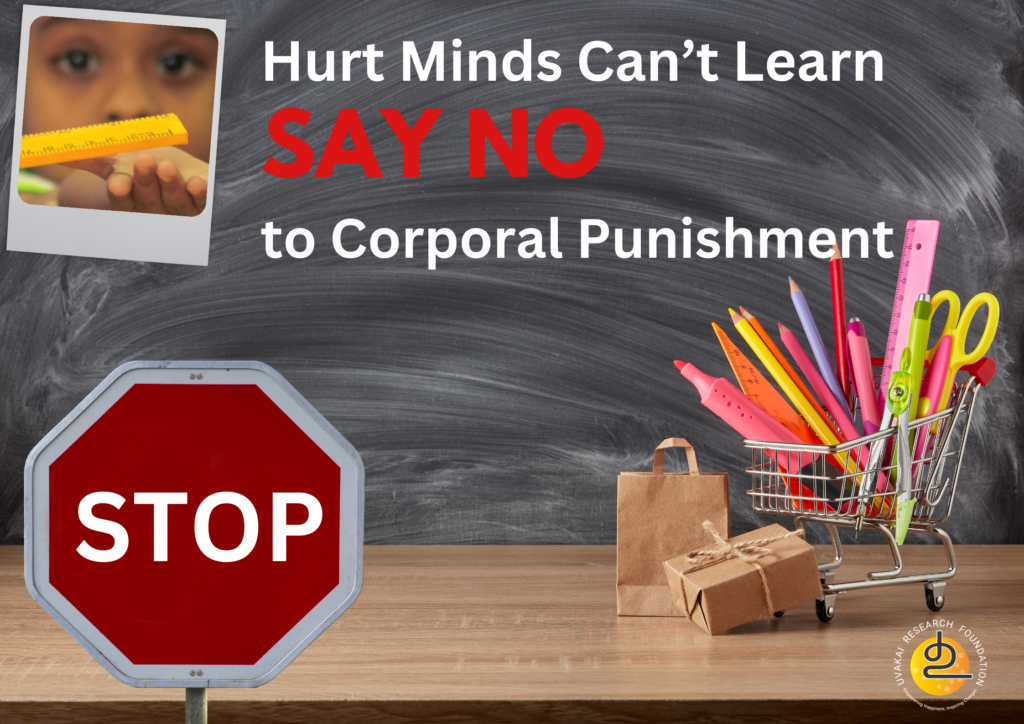


Understanding Corporal Punishment, Its Impact, Legal Measures, and Alternatives
Introduction
Corporal punishment in schools has been a controversial topic for decades. While some consider it a quick way to instill discipline, research and real-life experiences show its devastating effects on children’s physical and mental health. This blog delves into what corporal punishment entails, its impacts, the legal framework against it, and alternative approaches to managing discipline in schools.
What is Corporal Punishment?
Corporal punishment is the deliberate infliction of physical pain or discomfort on a child to correct or control their behavior. It includes physical acts like spanking, slapping, or forcing a child into uncomfortable positions and mental harassment such as belittling or ridiculing. According to the Right of Children to Free and Compulsory Education (RTE) Act, 2009, corporal punishment is categorized into three types:
- Physical Punishment: Hitting, forcing a child to kneel, or making them carry heavy objects.
- Mental Harassment: Sarcastic comments, public humiliation, or intimidation.
- Discrimination: Treating children differently based on caste, gender, or socioeconomic background.
The Impact of Corporal Punishment on Children
Psychological and Emotional Harm
- Anxiety and Depression: Children subjected to corporal punishment are more likely to develop mental health issues like anxiety, depression, and low self-esteem.
- Behavioral Problems: Instead of reducing misbehavior, corporal punishment often increases aggression and defiance in children.
- Cycle of Violence: Children exposed to violence may normalize it and carry these behaviors into adulthood, perpetuating abusive relationships.
Impact on Education
- Decreased Academic Performance: Fear of punishment hampers learning, leading to poor academic outcomes and higher dropout rates.
- Deterrence from School: Many children avoid school due to fear, affecting their right to education.
Physical Harm
- Even “mild” physical punishment can result in injuries, chronic pain, or, in extreme cases, fatal consequences.
Legal Measures Against Corporal Punishment
India has a strong legal framework to protect children:
- RTE Act, 2009: Prohibits physical punishment and mental harassment in schools, making it a punishable offense.
- Juvenile Justice Act, 2000: Criminalizes acts that cause unnecessary physical or mental suffering to a child.
- Indian Penal Code (IPC): Sections like 323 (voluntarily causing hurt) and 352 (use of criminal force) address physical harm caused to children.
- Constitutional Protections: Articles 21 and 21A safeguard children’s rights to life, dignity, and education.
Internationally, the UN Convention on the Rights of the Child emphasizes protecting children from all forms of violence.
Challenges in Enforcement
Despite the legal framework, corporal punishment persists due to:
- Cultural Acceptance: Many view physical punishment as a traditional disciplinary tool.
- Lack of Awareness: Teachers and parents may not understand the harmful consequences or legal ramifications.
- Weak Monitoring Systems: Schools often lack mechanisms to report and address incidents effectively.
Alternatives to Corporal Punishment
To create a supportive and disciplined environment without violence, schools can adopt these methods:
- Positive Reinforcement: Reward good behavior to encourage repetition.
- Conflict Resolution: Teach children to resolve disputes constructively.
- Time-Outs: Use these as cooling-off periods for both teachers and students.
- Modeling Behavior: Teachers should lead by example, demonstrating calm and respectful behavior.
- Logical and Natural Consequences: Help children understand the outcomes of their actions in a non-punitive way.
- Teacher Training: Equip educators with skills in classroom management and emotional intelligence.
- Student Support Systems: Create safe spaces for students to express concerns without fear.
Conclusion
Corporal punishment undermines children’s rights and does more harm than good. Its abolition is not just a legal necessity but a moral imperative. Schools must replace harmful practices with compassionate, effective methods of discipline that respect children’s dignity and foster a positive learning environment.
Join the Conversation
What are your thoughts on corporal punishment in schools? Have you witnessed or experienced it firsthand? How can schools better manage discipline without resorting to violence? Share your opinions and ideas in the comments below—let’s work together to create safer, more nurturing spaces for children to learn and grow.
